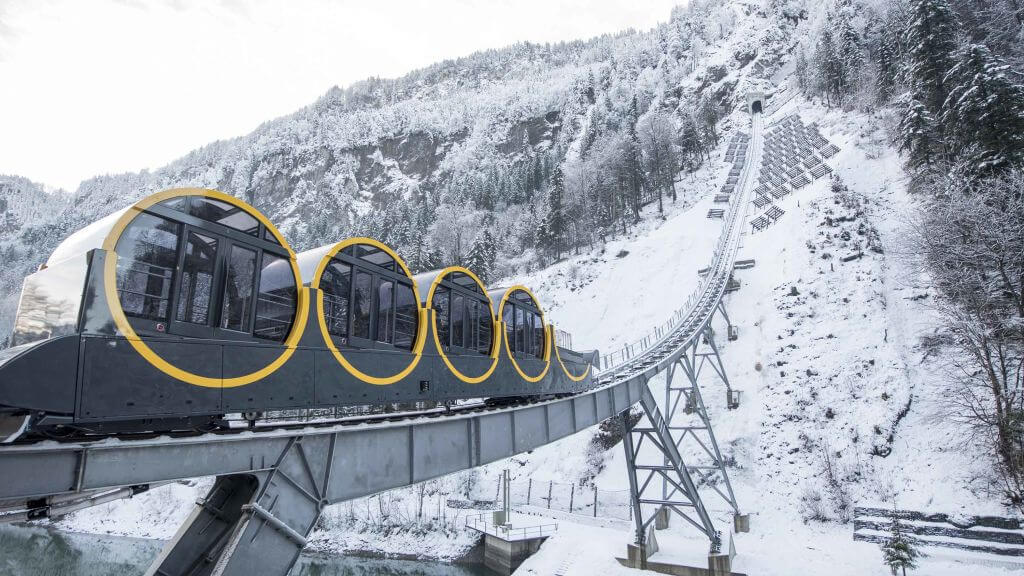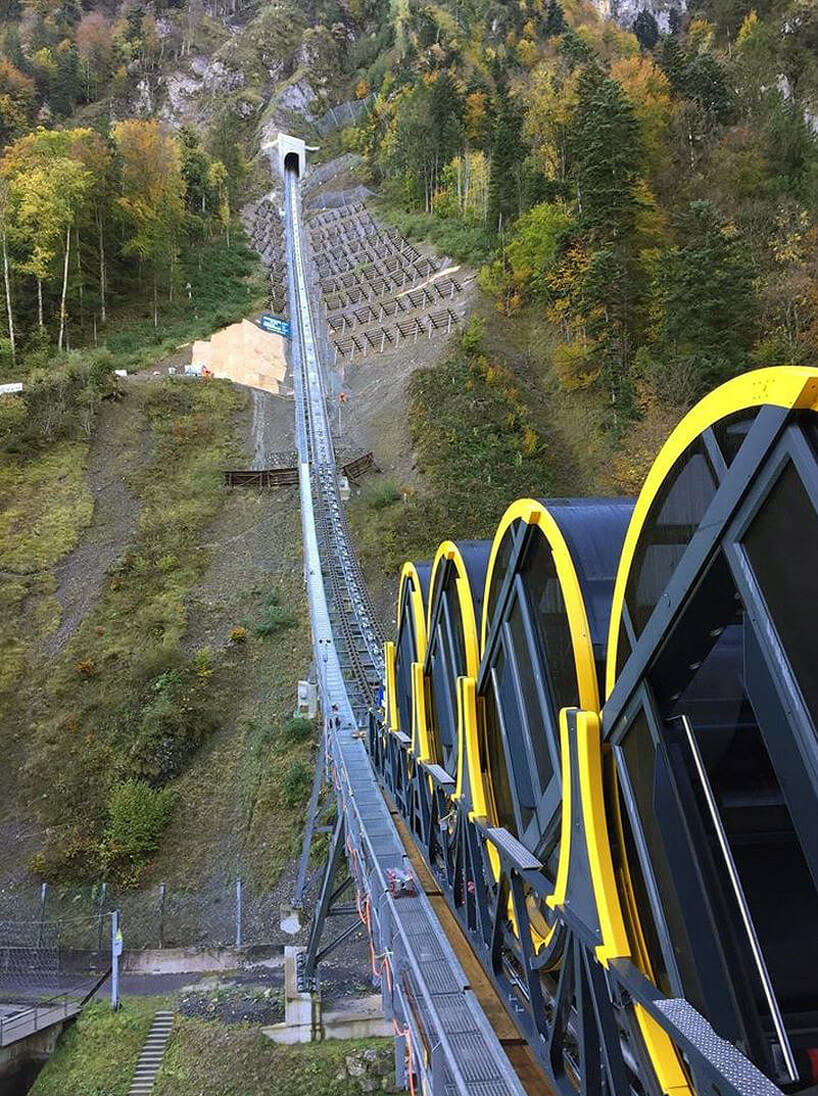
For those who don’t know, a funicular railway is a type of railway that takes passengers up and down steep inclines using carriages pulled by cables. Last week, the steepest in the world, the Stoos Bahn tram, opened in Switzerland.
The $52.6 million project, which took 14 years of planning and construction, runs from Schwyz to the mountain village of Stoos. As it travels up the mile-long track, the circular cars rotate to keep the 34 passengers standing upright. At its steepest point, the funicular climbs at a gradient of 110 percent.

The track starts at 1840 feet above sea level and finishes at an altitude of 4284 feet. Moving at 22 miles per hour, it takes four minutes to complete a journey that consists of three tunnels and a bridge measuring 1640 feet in length.
Most of the track is designed for just one train, but it splits into two at a certain point to allow the carriages to pass each other.
Financial and engineering problems meant the funicular opened two years later than planned. It breaks the previous steepness record held by the Gelmerbahn at Bern, Switzerland, which has a gradient of 106 percent.
The railway replaces a previous funicular that has been in operation since 1933. "After 14 years of planning and building, everyone is very proud of this train," said Ivan Steiner, a spokesman for the railway.
Children regularly use cable cars to get to school in Switzerland. In addition to attracting tourists, the new funicular will be used to connect communities, reports the BBC’s Imogen Foulkes.

